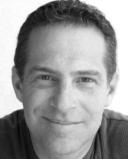Personal Perspectives
The Many "Flavors" of OCD
Why Detective Monk’s and Melvin Udall’s compulsions get all the attention
Posted April 23, 2010
 If I asked all of you reading this blog to take a field trip with me to my favorite ice cream parlor, eat a cone randomly selected for you, and then describe your experiences, chances are we'd wind up with some very different reviews. Some of you might write about the chocolate chip ice cream you had, others about creamy French vanilla, and perhaps someone would tell us about a cone packed with pink bubblegum goo. (Do they still make that stuff?) No one of your reviews would likely capture the totality of the parlor's offerings.
If I asked all of you reading this blog to take a field trip with me to my favorite ice cream parlor, eat a cone randomly selected for you, and then describe your experiences, chances are we'd wind up with some very different reviews. Some of you might write about the chocolate chip ice cream you had, others about creamy French vanilla, and perhaps someone would tell us about a cone packed with pink bubblegum goo. (Do they still make that stuff?) No one of your reviews would likely capture the totality of the parlor's offerings.
Such is the case with OCD.
If we can think of the disorder as an ice cream parlor in which those of us with OCD wind up, then we can think of the many OCD subtypes as the random ice cream flavors that land in our cones. Many of us have attempted to describe our experiences in this parlor, but for a variety of reasons I'll get back to, reviews of just two of these flavors seem to get all the attention. The two flavors? Hmmm, I suppose we could call them "Check-and-Check-Again Chocolate" and "Scrub, Scrub, Scrub Strawberry."
Yikes, Bell, I hear you protesting.... where ARE you going with all this???
Fair question. Perhaps ice cream is not the best metaphor for something that destroys so many lives, but here's the point I'm trying to make: When it comes to the attention that OCD attracts--at least from the news media and television/movie producers--two subtypes (flavors, if you will) tend to dominate that coverage: checking and washing. This is a big source of frustration for many in the OCD community who would like to have their stories told; I know because I get their mail and I see their online postings. I think they have a valid gripe, and as someone who has been on both sides of the mic (as a news anchor reporting on mental health issues, and an OCD author/spokesperson speaking to the media), I have some theories about all this. But first a few words about OCD subtypes.
OCD Subtypes
As described in an earlier blog, OCD is a disorder of obsessions (recurring disturbing and intrusive thoughts) and compulsions (repetitive, counterproductive behaviors aimed at ridding oneself of said obsessions). The scope of each of these components is wide, with obsessions ranging from contamination to losing control, and compulsions ranging from counting to arranging, and the potential pairings are seemingly endless. For lack of a better system, I suppose, we with OCD are often categorized by our most prominent compulsions; so someone like me who has battled inspecting and scrubbing compulsions is often referred to as a "checker" and "washer." (Yes, I'm one of those aforementioned OCD media-attention hogs. Sorry!) In a similar vein, individuals who compulsively repeat patterns are known as "repeaters" and those who compulsively arrange things are known as "orderers."
But here's the thing: Not all compulsions are outwardly apparent; a great many are what we call "mental compulsions"--that is, rituals performed entirely inside one's head. Take ruminating (or "mental checking"), for many years, my own most prominent and debilitating compulsion. At my worst, I could spend hours at a time compulsively conjuring up and replaying vivid mental sequences--from lane changes to conversations--always with the aim of neutralizing some obsession or another. In a similar fashion, many individuals with OCD silently perform counting rituals or compulsively repeat inaudible prayers. Still others read sentences forwards and backwards, quietly, inside their heads.
The Monk/Melvin Factor
So why don't we hear and see more about the struggles of those who battle these invisible compulsions? I submit it's precisely because they are invisible. In the world of electronic media, compelling video and audio are key. Ever wonder why a spectacular fire at an empty warehouse can sometimes lead a TV newscast? It's visual! And think about the OCD television and movie characters Hollywood has given us: Detective Monk and Jack Nicholson's "Melvin" would be far less intriguing, indeed, if we could only imagine the compulsions inside their heads.
I asked Jeff Szymanski, Ph.D., to weigh in on this. Dr. Szymanski serves as the executive director for the International OCD Foundation, and has been on the frontlines of OCD media coverage for years. He offers a second reason for the media/public fixation on washing and checking: "Washers and checkers probably also get more attention as they were identified first in psychological/psychiatric writings, while subtypes such as . . . scrupulosity and hoarding have only more recently been studied and talked about." This makes sense to me, especially given the very new, and very widespread, interest in hoarding that we see today.
As for why all this matters to those in the OCD community who aren't washers and checkers, Dr. Szymanski sums it up in a way that I, myself, can relate to well: "There is something very validating about knowing someone is going through something similar to you." I know that certainly was the case for me. I also can't help thinking how good it would be for OCD awareness, in general, if we could better disseminate the stories of all of our subtypes. To that end, I am going to point you to the IOCDF reading list and suggest that you peruse the personal memoirs section--skip that one by Jeff Bell; it's filled with washing and checking stories!--and consider picking up a few.
Think of it as a trip back to the ice cream parlor, to sample a few other flavors!


